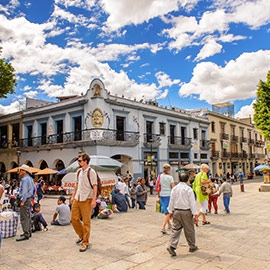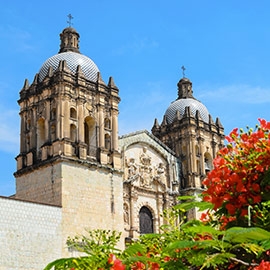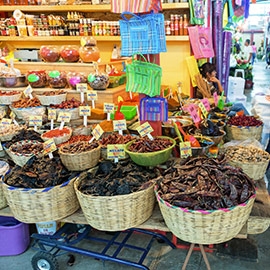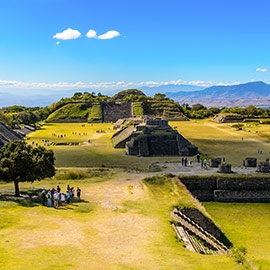Zócalo
The Zócalo or Plaza de la Constitución has been hosting grand events in Oaxaca since 1529, but it is also a special place any day, where you can admire beautiful architecture and engage in animated conversations.
Catedral de Oaxaca
Oaxaca's Cathedral is a wonderful and impressive Baroque temple located in the heart of the city. A beautiful example of art that you can only see in America.
Mercado 20 de noviembre
If you want to enjoy good Oaxacan food, you just have to stop by this famous market. If Oaxaca has already captivated you, just wait till you try the cuisine.
Centro Cultural San Agustín
The San Agustin Cultural Center was a weaving factory and today is one of the most beautiful places in Oaxaca, so much so that they say it is impossible for you to leave without taking a selfie. Do you want to try it?
Monte Albán
Alban Mountain is an impressive Zapotecan archaeological site. Today we know that it was one of the most important cities in Mesoamerica. This World Heritage Site is a must-see.
 QUICK FACTS ABOUT OAXACA
QUICK FACTS ABOUT OAXACA






 Quick Facts about Santo Domingo de Heredia
Quick Facts about Santo Domingo de Heredia